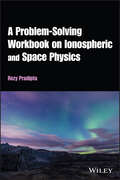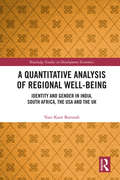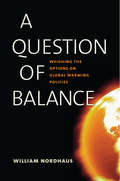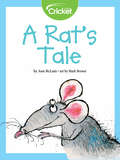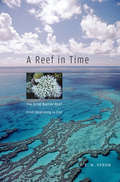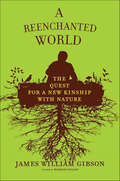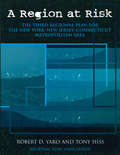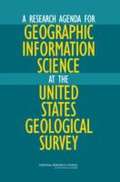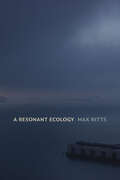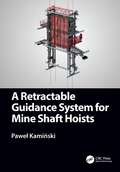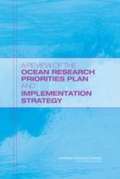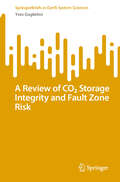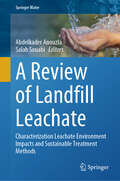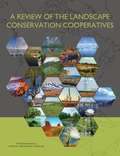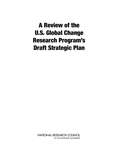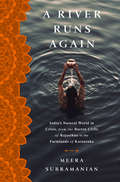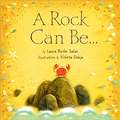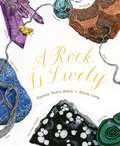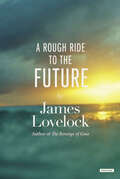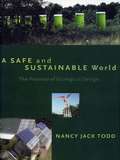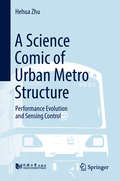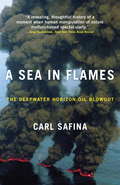- Table View
- List View
A Problem-Solving Workbook on Ionospheric and Space Physics
by Rezy PradiptaA Problem-Solving Workbook on Ionospheric and Space Physics Enables students to understand and master basic and advanced concepts of space, atmosphere, and ionospheric physics A Problem-Solving Workbook on Ionospheric and Space Physics is a unique textbook that contains a set of problems and exercises accompanied with complete solutions that explore and elucidate the most relevant concepts in ionospheric and space physics. The author has chosen problems that are interesting topic-wise, challenging, and that exemplify the physical and mathematical reasoning in ionospheric and space physics. Specifically, the text conveys core concepts of ionospheric and space physics using a problem-based approach. Each problem elucidates prototypical aspects that readers can easily generalize. Each problem also consists of multi-part questions to facilitate step-by-step understanding. A short introduction to each problem defines the theme and provides context to the readers. In A Problem-Solving Workbook on Ionospheric and Space Physics, readers can expect to learn about: Remote sensing of ionospheric plasmas from the ground, ionospheric slab thickness of a transparent layer, reflectometry, and doppler effects in reflection/refraction of electromagnetic waves Chapman theory of ionospheric layer formation, magnetic fields generated by the equatorial electrojet current, and fundamentals of GPS total electron content (TEC) measurements Barker codes and radar pulse compression, abel inversion of ionosonde trace data, and phase and group velocities of acoustic-gravity waves The use of deconvolution in radar scans, sporadic-E layers and Kelvin-Helmholtz instability due to wind shear, and Brunt-Vaisala frequency Thanks to the careful selection of included material, A Problem-Solving Workbook on Ionospheric and Space Physics serves as a gateway for advanced students and early-career researchers towards actual research-level problems in the field. As the problems are textbook-agnostic, students can easily self-study and learn about the subject outside the classroom.
A Quantitative Analysis of Regional Well-Being: Identity and Gender in India, South Africa, the USA and the UK (Routledge Studies in Development Economics)
by Vani Kant BorooahUsing data from the World Values Survey, this book sheds light on the link between happiness and the social group to which one belongs. The work is based on a rigorous statistical analysis of differences in the probability of happiness and life satisfaction between the predominant social group and subordinate groups. The cases of India and South Africa receive deep attention in dedicated chapters on cast and race, with other chapters considering issues such as cultural bias, religion, patriarchy, and gender. An additional chapter offers a global perspective. On top of this, the longitudinal nature of the data facilitates an examination of how world happiness has evolved between 1994 and 2014. This book will be a valuable reference for advanced students, scholars and policymakers involved in development economics, well-being, development geography, and sociology.
A Question of Balance
by William D. NordhausAs scientific and observational evidence on global warming piles up every day, questions of economic policy in this central environmental topic have taken center stage. But as author and prominent Yale economist William Nordhaus observes, the issues involved in understanding global warming and slowing its harmful effects are complex and cross disciplinary boundaries. For example, ecologists see global warming as a threat to ecosystems, utilities as a debit to their balance sheets, and farmers as a hazard to their livelihoods. In this important work, William Nordhaus integrates the entire spectrum of economic and scientific research to weigh the costs of reducing emissions against the benefits of reducing the long-run damages from global warming. The book offers one of the most extensive analyses of the economic and environmental dynamics of greenhouse-gas emissions and climate change and provides the tools to evaluate alternative approaches to slowing global warming. The author emphasizes the need to establish effective mechanisms, such as carbon taxes, to harness markets and harmonize the efforts of different countries. This book not only will shape discussion of one the world's most pressing problems but will provide the rationales and methods for achieving widespread agreement on our next best move in alleviating global warming.
A Random Walk in Physics: Beyond Black Holes and Time-Travels
by Angelo Vulpiani Andrea Puglisi Massimo Cencini Davide VergniThis book offers an informal, easy-to-understand account of topics in modern physics and mathematics. The focus is, in particular, on statistical mechanics, soft matter, probability, chaos, complexity, and models, as well as their interplay. The book features 28 key entries and it is carefully structured so as to allow readers to pursue different paths that reflect their interests and priorities, thereby avoiding an excessively systematic presentation that might stifle interest. While the majority of the entries concern specific topics and arguments, some relate to important protagonists of science, highlighting and explaining their contributions. Advanced mathematics is avoided, and formulas are introduced in only a few cases. The book is a user-friendly tool that nevertheless avoids scientific compromise. It is of interest to all who seek a better grasp of the world that surrounds us and of the ideas that have changed our perceptions.
A Rat's Tale
by Ann McLainRats are opportunistic, living in human cities provides them with food, shelter, and everything else they need!
A Reef in Time: The Great Barrier Reef from Beginning to End
by J.E.N. VeronLike many coral specialists fifteen years ago, J.E.N. Veron thought Australia’s Great Barrier Reef was impervious to climate change. “Owned by a prosperous country and accorded the protection it deserves, it would surely not go the way of the Amazon rain forest or the parklands of Africa, but would endure forever. That is what I thought once, but I think it no longer.” This book is Veron’s Silent Spring for the world’s coral reefs. Veron presents the geological history of the reef, the biology of coral reef ecosystems, and a primer on what we know about climate change. He concludes that the Great Barrier Reef and, indeed, most coral reefs will be dead from mass bleaching and irreversible acidification within the coming century unless greenhouse gas emissions are curbed. If we don’t have the political will to confront the plight of the world’s reefs, he argues, current processes already in motion will become unstoppable, bringing on a mass extinction the world has not seen for 65 million years. Our species has cracked its own genetic code and sent representatives of its kind to the moon—we can certainly save the world’s reefs if we want to. But to achieve this goal, we must devote scientific expertise and political muscle to the development of green technologies that will dramatically reduce greenhouse emissions and reverse acidification of the oceans.
A Reenchanted World: The Quest for a New Kinship with Nature
by James William GibsonA surprising and enlightening investigation of how modern society is making nature sacred once againFor more than two centuries, Western cultures, as they became ever more industrialized, increasingly regarded the natural world as little more than a collection of useful raw resources. The folklore of powerful forest spirits and mountain demons was displaced by the practicalities of logging and strip-mining; the traditional rituals of hunting ceremonies gave way to the indiscriminate butchering of animals for meat markets. In the famous lament of Max Weber, our surroundings became "disenchanted," with nature's magic swept away by secularization and rationalization.But now, as acclaimed sociologist James William Gibson reveals in this insightful study, the culture of enchantment is making an astonishing comeback. From Greenpeace eco-warriors to evangelical Christians preaching "creation care" and geneticists who speak of human-animal kinship, Gibson finds a remarkably broad yearning for a spiritual reconnection to nature. As we grapple with increasingly dire environmental disasters, he points to this cultural shift as the last utopian dream—the final hope for protecting the world that all of us must live in.
A Region at Risk: The Third Regional Plan For The New York-New Jersey-Connecticut Metropolitan Area
by Tony Hiss Robert YaroRegional Plan Association, the nation's oldest regional planning organization, has worked since 1929 to improve the quality of life in the New York-New Jersey-Connecticut metropolitan area. The Association has crafted two long-term plans and successfully promoted their implementation through advocacy and coalition building.The Association's Third Regional Plan describes a series of key initiatives aimed at not only improving quality of life, but also at increasing economic competitiveness, encouraging more sustainable patterns of growth, and expanding opportunities and choice in employment, housing, and community.The Plan presents five major campaigns, each of which combines the goals of economic, equity, and environmental improvements. They are: Greensward -- to protect and restore large natural resource systems at the periphery of urbanized areas Centers -- to "recenter" regions that have experienced decades of sprawl growth Mobility -- to transform existing transit infrastructure to create a regional express rail network that would dramatically improve public transit, reduce highway congestion, and speed freight movement Workforce -- to provide the region's workforce with the skills and opportunities needed to participate in the economy of the future Governance -- to rationalize the activities of existing authorities, encourage service sharing among municipal governments, and encourage more effective state and regional land-use planning programs While focusing on the New York-New Jersey-Connecticut metropolitan area, the Plan's broad themes have universal applicability to regions throughout the industrialized world.
A Research Agenda For Geographic Information Science At The United States Geological Survey
by National Research Council of the National AcademiesComprehensive and authoritative baseline geospatial data content is crucial to the nation and to the U.S. Geological Survey (USGS). The USGS founded its Center of Excellence for Geospatial Information Science (CEGIS) in 2006 to develop and distribute national geospatial data assets in a fast-moving information technology environment. In order to fulfill this mission, the USGS asked the National Research Council to assess current GIScience capabilities at the USGS, identify current and future needs for GIScience capabilities, recommend strategies for strengthening these capabilities and for collaborating with others to maximize research productivity, and make recommendations regarding the most effective research areas for CEGIS to pursue. With an initial focus on improving the capabilities of The National Map, the report recommends three priority research areas for CEGIS: information access and dissemination, data integration, and data models, and further identifies research topics within these areas that CEGIS should pursue. To address these research topics, CEGIS needs a sustainable research management process that involves a portfolio of collaborative research that balances short and long term goals.
A Resonant Ecology (Sign, Storage, Transmission)
by Max RittsIn A Resonant Ecology, Max Ritts traces how sound’s integration into the environmental politics of Canada’s North Coast has paved the way for massive industrial expansion. While conservationists hope that the dissemination of whale songs and other nature sounds will showcase the beauty of local wildlife for people around the world, Ritts reveals how colonial capitalism can co-opt sonic efforts to protect the coast. He demonstrates how digital technologies allow industry to sonically map new shipping lanes and facilitate new ways of experiencing sound—premised not on listening, but on sound’s exploitable status as a data resource. By outlining how sound can both perpetuate and refuse capitalist colonialism, Ritts challenges the idea that the sonic realm is inherently liberatory and reveals sound to be a powerfully uncertain object. Through a situated geographical approach, he makes the case that only a decolonial and multigenerational environmental politics can counter the false promise of “sustainable marine development” held up by industry and the state.
A Retractable Guidance System for Mine Shaft Hoists
by Paweł KamińskiRope guidance of conveyances is commonly used in shafts of underground mines in numerous countries on almost every continent. This safe and economical way of guiding skips and cages does have one disadvantage, however, which is especially troublesome in the conditions present in the Polish mining industry. Rope-guided conveyances require additional support at mine levels, while shafts of Polish coal mines usually operate on many levels. Additional stiff guidance at mine levels used as a support negatively affects the effectiveness of rope-guided hoisting systems. The retractable guidance system was originally introduced at the 960 m level in the Leon IV shaft of the Rydułtowy coal mine in Rydułtowy (currently ROW mine, Rydułtowy department), Silesian voivodeship, Poland. This construction, consisting of moveable elements, similar to the typical stiff guidance used at mine levels, serves as a support for the conveyance whenever necessary. When it is retracted, it allows the cage to travel at full speed through the level, increasing the degree of effectiveness of the hoisting system of the Leon IV shaft. The retractable guidance system, the solution presented in this book, is a pioneering approach in the Polish mining industry. It has allowed improvement of the level of effectiveness of the Leon IV shaft of the Rydułtowy colliery. It is an innovative opportunity for rope guidance systems worldwide, as it solves their biggest problem in multi-level shafts.
A Review Of The Ocean Research Priorities Plan And Implementation Strategy
by National Research Council of the National AcademiesOcean research offers countless benefits, from improving fisheries management to discovering new drugs to enabling early detection of tsunamis and hurricanes. At the request of the Joint Subcommittee on Ocean Science and Technology (JSOST), the National Research Council convened a committee to review the draft and final versions of the Ocean Research Priorities Plan and Implementation Strategy described in Charting the Course for Ocean Science in the United States: Research Priorities for the Next Decade, which represents the first coordinated national ocean research planning effort involving all federal agencies that support ocean science. The plan presents an ambitious vision for ocean research that will be of great benefit to the ocean sciences community and the nation. This book contains both sets of findings (i.e., the committee's review of the JSOST's draft plan [A Review of the Draft Ocean Research Priorities Plan: Charting the Course for Ocean Science in the United States] and the review of the final plan). This book recommends that JSOST employ a variety of outreach mechanisms to continue to engage nonfederal partners in ocean research planning efforts, such as establishing external committees to provide scientific and technical advice and to review progress on implementation of the research plan.
A Review of CO₂ Storage Integrity and Fault Zone Risk (SpringerBriefs in Earth System Sciences)
by Yves GuglielmiThis book compares how seismic fault activation can be described by frictional-based theories such as the rate and state theory or by a general dynamic plasticity approach such as the Cam-Clay theory. In this book, the leading edge of fault physics concepts that are best suited and applicable to assess the risk of leakage and induced seismicity associated with large-scale CO₂ storage in sedimentary basins are explored. It compares the hydromechanical response of faults under deviatoric loading at laboratory, field experiment and basin scales. A review of some key parameters that drive the brittle-ductile behavior of faults affecting the reservoir-caprock system is presented. It is suggested that more general plastic criteria than the Coulomb failure should be used to better account for the ratio between the bulk plasticity and localized frictional strength of a fault zone. Based on new field data, it is shown that most of the fault permeability increase occurs at the onset of activation due to bulk dilation, whereas shearing has less impact on the permeability. This is different from laboratory observations where shearing often results in strong permeability reductions. This last part leads to some new concepts that have not been discussed to date, such as the possibility of slow fault movements eventually evolving to earthquakes at timescales of years to decades, thus relevant to the time life of CO₂ storage permits.
A Review of Landfill Leachate: Characterization Leachate Environment Impacts and Sustainable Treatment Methods (Springer Water)
by Salah Souabi Abdelkader AnouzlaSolid waste landfilling and related environmental issues have become global concerns, particularly in developing countries. Accelerating population growth and changing lifestyles have exacerbated health and environmental challenges. This book looks at the global ramifications of leachate characterization and environmental impacts, highlighting the different issues related to landfilling, such as leachate generation and its constituents. When water enters a landfill, it assimilates the dissolved components of the decomposing waste, thus forming a leachate with considerable impacts on the environment. The nature of the landfill and the waste received (household waste alone or mixed with industrial waste) determine whether the leachate produced is hazardous or not. The decomposition of solid waste in landfills goes through several stages, including an initial aerobic phase, an anaerobic acid phase, an initial methanogenic phase and a stable methanogenic phase. Leachates can contain significant concentrations of heavy metals, inorganic salts, ammonia, halogenated hydrocarbons, suspended matter, organic pollutants in significant quantities... Generally, leachate discharges are rich in phenol, highly toxic polluting ammonium. Ecotoxicological assessment of this effluent is essential to determine the impact of its contaminants on the aquatic ecosystem. If pollutants are not disposed of properly, leachate from landfills can potentially enter soils and subsoils, severely contaminating surface and groundwater bodies. Therefore, reducing pollutant levels through leachate treatment has garnered considerable attention in recent decades. This publication is an invaluable resource, providing up-to-date information on the impact and characterization of leachate landfills. It is therefore time to accentuate the training of executives with all the skills to facilitate the waste management through the research efforts of academics, in the field of solid wastelandfill operations.
A Review of the Landscape Conservation Cooperatives
by Engineering Medicine National Academies of SciencesThe United States' tradition of conserving fish, wildlife, habitats, and cultural resources dates to the mid-19th century. States have long sought to manage fish and wildlife species within their borders, whereas many early federal conservation efforts focused on setting aside specific places as parks, sanctuaries, or reserves. With advances in landscape ecology over the past quarter-century, conservation planners, scientists, and practitioners began to stress the importance of conservation efforts at the scale of landscapes and seascapes. These larger areas were thought to harbor relatively large numbers of species that are likely to maintain population viability and sustain ecological processes and natural disturbance regimes - often considered critical factors in conserving biodiversity. By focusing conservation efforts at the level of whole ecosystems and landscape, practitioners can better attempt to conserve the vast majority of species in a particular ecosystem. Successfully addressing the large-scale, interlinked problems associated with landscape degradation will necessitate a planning process that bridges different scientific disciplines and across sectors, as well as an understanding of complexity, uncertainty, and the local context of conservation work. The landscape approach aims to develop shared conservation priorities across jurisdictions and across many resources to create a single, collaborative conservation effort that can meet stakeholder needs. Conservation of habitats, species, ecosystem services, and cultural resources in the face of multiple stressors requires governance structures that can bridge the geographic and jurisdictional boundaries of the complex socio-ecological systems in which landscape-level conservation occurs. The Landscape Conservation Cooperatives (LCC) Network was established to complement and add value to the many ongoing state, tribal, federal, and nongovernmental efforts to address the challenge of conserving species, habitats, ecosystem services, and cultural resources in the face of large-scale and long-term threats, including climate change. A Review of the Landscape Conservation Cooperatives evaluates the purpose, goals, and scientific merits of the LCC program within the context of similar programs, and whether the program has resulted in measurable improvements in the health of fish, wildlife, and their habitats.
A Review of the U.S. Global Change Research Program's Strategic Plan
by National Research Council Division of Behavioral and Social Sciences and Education Board on Environmental Change and Society Division on Earth and Life Studies Committee to Advise the U.S. Global Change Research Program Board on Atmospheric Sciences and ClimateThe U.S. government supports a large, diverse suite of activities that can be broadly characterized as "global change research." Such research offers a wide array of benefits to the nation, in terms of protecting public health and safety, enhancing economic strength and competitiveness, and protecting the natural systems upon which life depends. The U.S. Global Change Research Program (USGCRP), which coordinates the efforts of numerous agencies and departments across the federal government, was officially established in 1990 through the U.S. Global Change Research Act (GCRA). In the subsequent years, the scope, structure, and priorities of the Program have evolved, (for example, it was referred to as the Climate Change Science Program [CCSP] for the years 2002-2008), but throughout, the Program has played an important role in shaping and coordinating our nation's global change research enterprise. This research enterprise, in turn, has played a crucial role in advancing understanding of our changing global environment and the countless ways in which human society affects and is affected by such changes. In mid-2011, a new NRC Committee to Advise the USGCRP was formed and charged to provide a centralized source of ongoing whole-program advice to the USGCRP. The first major task of this committee was to provide a review of the USGCRP draft Strategic Plan 2012-2021 (referred to herein as "the Plan"), which was made available for public comment on September 30, 2011. A Review of the U.S. Global Change Research Program's Strategic Plan addresses an array of suggestions for improving the Plan, ranging from relatively small edits to large questions about the Program's scope, goals, and capacity to meet those goals. The draft Plan proposes a significant broadening of the Program's scope from the form it took as the CCSP. Outlined in this report, issues of key importance are the need to identify initial steps the Program will take to actually achieve the proposed broadening of its scope, to develop critical science capacity that is now lacking, and to link the production of knowledge to its use; and the need to establish an overall governance structure that will allow the Program to move in the planned new directions.
A River Ran Wild: An Environmental History
by Lynne CherryAn environmental history of the Nashua River, from its discovery by Indians through the polluting years of the Industrial Revolution to the ambitious cleanup that revitalized it.
A River Runs Again: India's Natural World in Crisis, from the Barren Cliffs of Rajasthan to the Farmlands of Karnataka
by Meera SubramanianCrowded, hot, subject to violent swings in climate, with a government unable or unwilling to face the most vital challenges, the rich and poor increasingly living in worlds a∂ for most of the world, this picture is of a possible future. For India, it is the very real present. In this lyrical exploration of life, loss, and survival, Meera Subramanian travels in search of the ordinary people and microenterprises determined to revive India’s ravaged natural world: an engineer-turned-farmer brings organic food to Indian plates; villagers resuscitate a river run dry; cook stove designers persist on the quest for a smokeless fire; biologists bring vultures back from the brink of extinction; and in Bihar, one of India’s most impoverished states, a bold young woman teaches adolescents the fundamentals of sexual health. While investigating these five environmental challenges, Subramanian discovers the stories that renew hope for a nation with the potential to lead India and the planet into a sustainable and prosperous future.
A Rock Can Be (Millbrook Picture Books)
by Laura Purdie Salas Violeta DabijaRocks may seem like boring, static objects—until you discover that a rock can spark a fire, glow in the dark, and provide shelters of all shapes and sizes. Laura Purdie Salas's lyrical rhyming text and Violeta Dabija's glowing illustrations show how rocks decorate and strengthen the world around them.
A Rock Is Lively
by Dianna Hutts Aston Sylvia LongFrom the award-winning creators of An Egg Is Quiet, A Seed Is Sleepy, and A Butterfly Is Patient comes a gorgeous and informative introduction to the fascinating world of rocks. From dazzling blue lapis lazuli to volcanic snowflake obsidian, an incredible variety of rocks are showcased in all their splendor. Poetic in voice and elegant in design, this book introduces an array of facts, making it equally perfect for classroom sharing and family reading.
A Rough Ride to the Future
by James LovelockThe great scientific visionary of our age presents a radical vision of humanity’s future as the thinking brain of our Earth-system.A Rough Ride to the Future introduces two new Lovelockian ideas. The first is that three hundred years ago, when Thomas Newcomen invented the steam engine, he was unknowingly beginning what James Lovelock calls “accelerated evolution.” That is a process that is bringing about change on our planet roughly a million times faster than Darwinian evolution. The second idea is that as part of this process, humanity has the capacity to become the intelligent part of Gaia, the self-regulating earth system whose discovery Lovelock first announced nearly fifty years ago. A Rough Ride to theFuture is also an intellectual autobiography, in which Lovelock reflects on his life as a lone scientist and asks—eloquently—whether his career trajectory is possible in an age of increased bureaucratization. We are now changing the atmosphere again, and Lovelock argues that there is little that can be done about this. But instead of feeling guilty, we should recognize what is happening, prepare for change, and ensure that we survive as a species so we can contribute to—perhaps even guide—the next evolution of Gaia. The road will be rough, but if we are smart enough, life will continue on earth in some form far into the future.Praise for A Rought Ride to the Future“Arresting and disturbing . . . Lovelock writes wonderfully well. With the authority of age, his voice is that of an elder statesman . . . The result is mellifluous and fluent.” —Nature “Though the subject matter could scarcely be more discouraging, Lovelock’s fluent prose and vast range of knowledge make it a surprisingly easy read. . . . His writing has enormous warmth and vitality.” —Financial Times “The most important book for me this year . . . Lovelock is the most prescient of scientists. . . . He has given us a handbook for human survival.” —John Gray, The Guardian“Not simply another look at Mother Nature’s uncertain future, but a revealing glimpse at the life of an outspoken and accomplished man of ideas.” —Publishers Weekly
A Safe and Sustainable World: The Promise Of Ecological Design
by Nancy Jack ToddIn the late sixties, as the world awoke to a need for Earth Day, a pioneering group founded a small non-profit research and education organization they called the New Alchemy Institute. Their aim was to explore the ways a safer and more sustainable world could be created. In the ensuing years, along with scientists, agriculturists, and a host of enthusiastic amateurs and friends, they set out to discover new ways that basic human needs--in the form of food, shelter, and energy--could be met. A Safe and Sustainable World is the story of that journey, as it was and as it continues to be.The dynamics and the resilience of the living world were the Institute's model and inspiration for their research. Central to their efforts then and now is, along with science, a spiritual quest for a more harmonious human role in our planet's future. The results of this work have now entered mainstream science through the emerging discipline of ecological design.Nancy Jack Todd relates a fascinating journey from lofty ideals through the hard realities encountered in learning how to actually grow food, harness the energy of the sun and wind, and design green architecture. She also introduces us to some of the heroes and mentors who played a vital role in those efforts, from Buckminster Fuller to Margaret Mead.Successfully proving through the Institute's designs and investigations that basic land sustainability is achievable, John Todd and the author founded a second non-profit research group, Ocean Arks International. A Safe and Sustainable World demonstrates what has, can, and must be done to integrate human ingenuity and four billion years of evolutionary intelligence into healthy, decentralized, local dreams.
A Science Comic of Urban Metro Structure: Performance Evolution and Sensing Control
by Hehua ZhuThis science comic presents the entire life cycle of the metro system in an accessible and fun way. Just like human beings, a metro system can get sick, and this book introduces its ailments, medical records along with experts’ diagnoses and available treatments. Using cartoons, it enables readers of all levels to quickly understand the scientific secrets behind the metro system. It is based on the results of China’s 973 program, which aims to promote and develop basic scientific research in China.
A Sea in Flames: The Deepwater Horizon Oil Blowout
by Carl SafinaCarl Safina has been hailed as one of the top 100 conservations of the 20th century (Audubon Magazine) andA Sea in Flamesis his blistering account of the months-long manmade disaster that tormented a region and mesmerized the nation. Traveling across the Gulf to make sense of an ever-changing story and its often-nonsensical twists, Safina expertly deconstructs the series of calamitous misjudgments that caused theDeepwater Horizonblowout, zeroes in on BP’s misstatements, evasions, and denials, reassesses his own reaction to the government’s crisis handling, and reviews the consequences of the leak-and what he considers the real problems, which the press largely overlooked. Safina takes us deep inside the faulty thinking that caused the lethal explosion. We join him on aerial surveys across an oil-coated sea. We confront pelicans and other wildlife whose blue universe fades to black. Safina skewers the excuses and the silly jargon-like “junk shot” and “top kill”-that made the tragedy feel like a comedy of horrors-and highlighted Big Oil’s appalling lack of preparedness for an event that was inevitable. Based on extensive research and interviews with fishermen, coastal residents, biologists, and government officials,A Sea In Flameshas some surprising answers on whether it was “Obama’s Katrina,” whether the Coast Guard was as inept in its response as BP was misleading, and whether this worst unintended release of oil in history was really America’s worst ecological disaster. Impassioned, moving, and even sharply funny,A Sea in Flamesis ultimately an indictment of America’s main addiction. Safina writes: “In the end, this is a chronicle of a summer of pain-and hope. Hope that the full potential of this catastrophe would not materialize, hope that the harm done would heal faster than feared, and hope that even if we didn’t suffer the absolutely worst-we’d still learn the big lesson here. We may have gotten two out of three. That’s not good enough. Because: there’ll be a next time. ” From the Hardcover edition.
A Sea of Glass: Searching for the Blaschkas' Fragile Legacy in an Ocean at Risk (Organisms and Environments #13)
by Drew HarvellIt started with a glass octopus. Dusty, broken, and all but forgotten, it caught Drew Harvell's eye. Fashioned in intricate detail by the father-son glassmaking team of Leopold and Rudolf Blaschka, the octopus belonged to a menagerie of unusual marine creatures that had been packed away for decades in a storage unit. More than 150 years earlier, the Blaschkas had been captivated by marine invertebrates and spun their likenesses into glass, documenting the life of oceans untouched by climate change and human impacts. Inspired by the Blaschkas' uncanny replicas, Harvell set out in search of their living counterparts. In A Sea of Glass, she recounts this journey of a lifetime, taking readers along as she dives beneath the ocean's surface to a rarely seen world, revealing the surprising and unusual biology of some of the most ancient animals on the tree of life. On the way, we glimpse a century of change in our ocean ecosystems and learn which of the living matches for the Blaschkas' creations are, indeed, as fragile as glass. Drew Harvell and the Blaschka menagerie are the subjects of the documentary Fragile Legacy, which won the Best Short Film award at the 2015 Blue Ocean Film Festival & Conservation Summit. Learn more about the film and check out the trailer here. See the Blaschka collection in person at the Corning Museum of Glass beginning in May 2016. Click here for more information.
